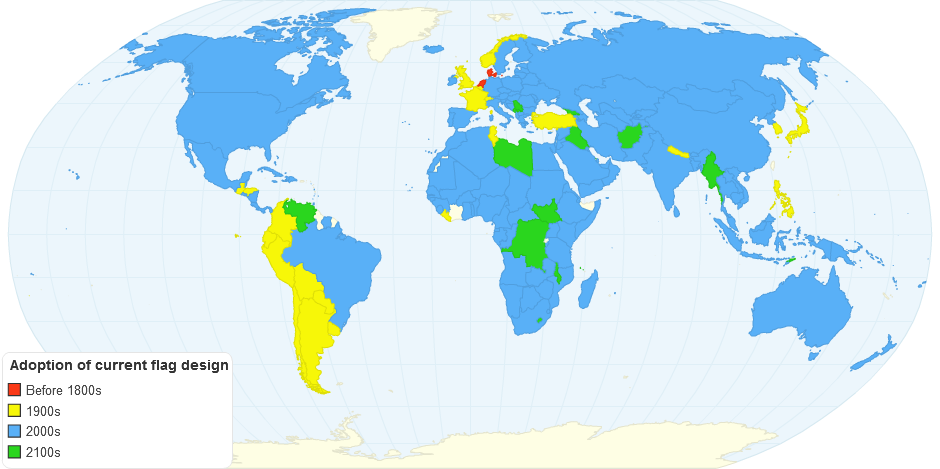This chart shows the Sovereign States by Century of Current Flag Adoption.
A flag is a piece of fabric with a distinctive design that is used as a symbol, as a signaling device, or as decoration. The term flag is also used to refer to the graphic design employed, and flags have since evolved into a general tool for rudimentary signalling and identification, especially in environments where communication is similarly challenging. National flags are potent patriotic symbols with varied wide-ranging interpretations, often including strong military associations due to their original and ongoing military uses. Flags are also used in messaging, advertising, or for other decorative purposes.
Vexillography is the art and practice of designing flags; it is allied with vexillology, the scholarly study of flags, but is not synonymous with that discipline. A person who designs flags is a vexillographer.Flag designs exhibit a number of regularities, arising from a variety of practical concerns, historical circumstances, and cultural prescriptions that have shaped and continue to shape their evolution.
This list defines the moment of flag adoption as the year since when the current flag had a continuous use to represent a nation, autonomous region or occupied state. Only countries that currently form a sovereign state are listed although the flag can be adopted before the countries gained independence. The listed countries may have gone through fundamental regime changes, big geographical changes or even temporary lost autonomy, joint bigger unions or split up. If the flag remained in use during such a period the original adoption date is used.
10 years ago

